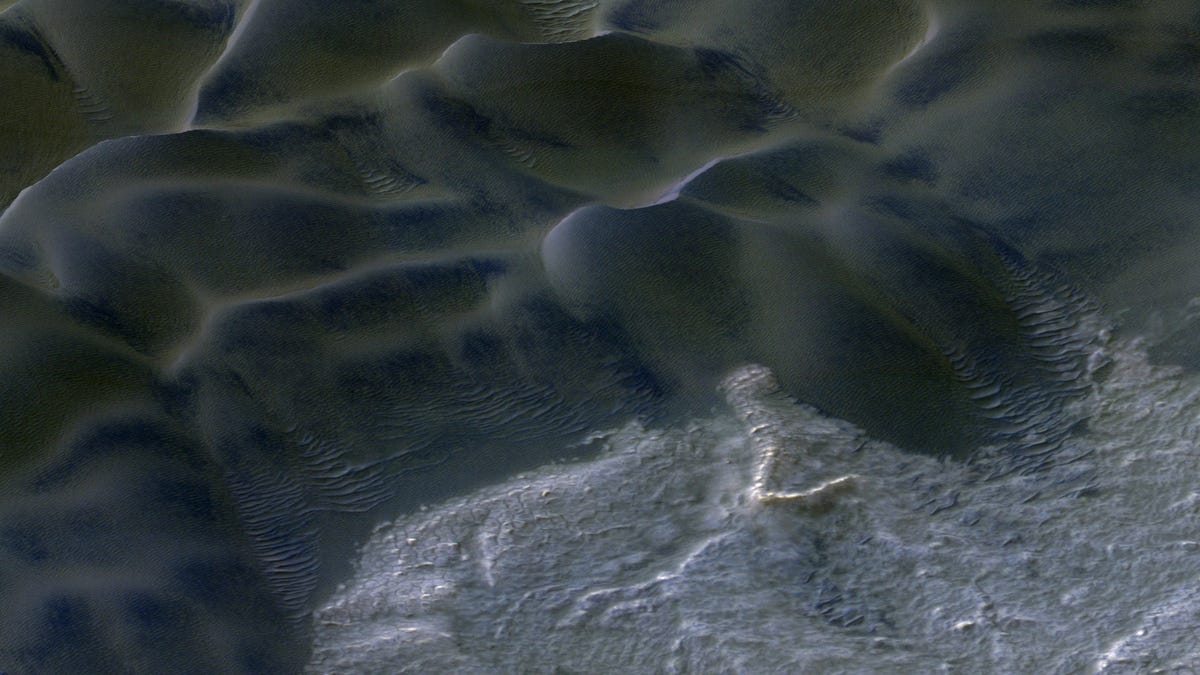Mars megaripples as tall as people show planet reshaping its landscape
Massive sandy ripples are on the move in the planet's north polar region.
Still pictures of Mars from above and on the ground tend to make the red planet look like an unchanging place. New research on Martian "megaripples" shows how Mars is refashioning itself as these sandy formations migrate with the wind.
A paper published in the Journal of Geophysical Research: Planets late last year describes megaripples as "distinct wind-driven bedforms that occur on the surface of Earth and Mars, often with sizes between that of smaller ripples and larger dunes." They can be as tall as a person.
The study used images from NASA's Mars Reconnaissance Orbiter's HiRise camera to investigate dune fields in the planet's north polar region. "Megaripples were found to be widespread across the region and migrating at relatively high rates relative to other sites on Mars that are at lower latitudes," said lead author Matthew Chojnacki in a Planetary Science Institute statement on Wednesday.
Active megaripples are visible in this HiRise image. The insert represents an area 330 feet (100 meters) wide.
Researchers had originally thought megaripples on Mars were relics from the past, more like static sculptures left over from a time when the planet was more geologically active. It seemed like the coarse grains that made up the ripples would be too hard to move with Martian winds. But a 2020 study found some Mars' megaripples near the equator are migrating.
The new paper adds to scientists' understanding of what's going on with these formations near the pole.
NASA's orbiter gave Chojnacki six Mars years (13 Earth years) worth of images to work with. "We found the thin Martian atmosphere can mobilize some coarse-grained megaripples, overturning prior notions that these were static relic landforms from a past climate," he said.
The megaripples seem to hibernate during the polar winter when carbon dioxide and water ice cover the land, but are on the move during windy periods in late spring and summer.
HiRise has delivered evidence of changes to the landscape of Mars, from claw-mark-like tracks left by dust devils to frosty shifts in the "Happy Face Crater." The moving megaripples are the latest testament to the red planet's ability to embrace change.


